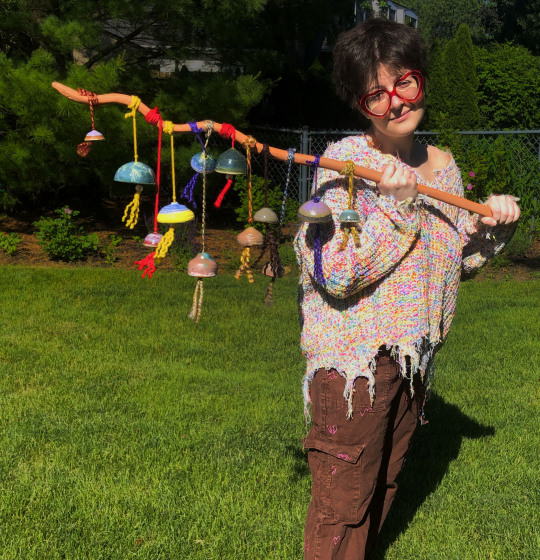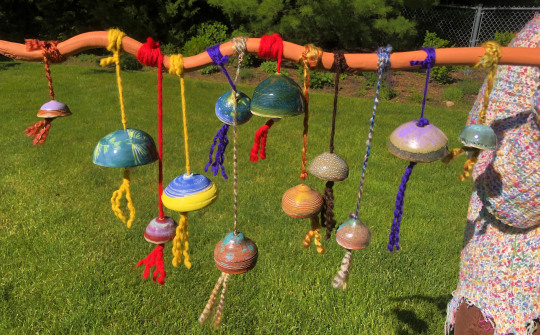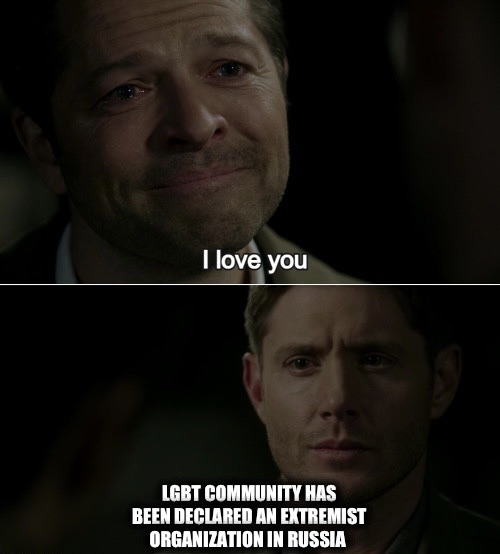#New and Emerging
Explore tagged Tumblr posts
Text

#homeless#homeless people in edinburgh offered beds 250 miles away weeks after city declares housing emergency#homeless people#rent is theft#rent is too damn high#landlords are parasites#fuck landlords#landlords are scum#landlords are leeches#landlords are bastards#i’m a housing lawyer – landlords use new loophole to push out tenants in ‘bad faith’ evictions#landlords#i took my landlord to court over common rental problem that made my life hell and won $14#court dismisses assault on landlord and son who threw student out in his ‘jocks’ after no rent paid#we had to flee our home as it was invaded by mice & bedbugs – inspectors said it’s ‘deplorable’ but landlord won’t act#landlord#rental#rent#auspol#politas#ausgov#tasgov#taspol#australia#fuck neoliberals#neoliberal capitalism#anthony albanese#albanese government#eat the rich#eat the fucking rich
51K notes
·
View notes
Text





#what a time to be alive dot mp3#sorry for spamming these posts but this is the funniest night on twitter in YEARS#is jones on air right now? i dont wanna go to infowars but this crashout is gonna be one for the ages#i really dont know which way he's gonna go. emergency knowledge fight episode now please 🙏#donald trump#alex jones#elon musk#us news#us politics
3K notes
·
View notes
Text
No paywall version here.
"Two and a half years ago, when I was asked to help write the most authoritative report on climate change in the United States, I hesitated...
In the end, I said yes, but reluctantly. Frankly, I was sick of admonishing people about how bad things could get. Scientists have raised the alarm over and over again, and still the temperature rises. Extreme events like heat waves, floods and droughts are becoming more severe and frequent, exactly as we predicted they would. We were proved right. It didn’t seem to matter.
Our report, which was released on Tuesday, contains more dire warnings. There are plenty of new reasons for despair. Thanks to recent scientific advances, we can now link climate change to specific extreme weather disasters, and we have a better understanding of how the feedback loops in the climate system can make warming even worse. We can also now more confidently forecast catastrophic outcomes if global emissions continue on their current trajectory.
But to me, the most surprising new finding in the Fifth National Climate Assessment is this: There has been genuine progress, too.
I’m used to mind-boggling numbers, and there are many of them in this report. Human beings have put about 1.6 trillion tons of carbon in the atmosphere since the Industrial Revolution — more than the weight of every living thing on Earth combined. But as we wrote the report, I learned other, even more mind-boggling numbers. In the last decade, the cost of wind energy has declined by 70 percent and solar has declined 90 percent. Renewables now make up 80 percent of new electricity generation capacity. Our country’s greenhouse gas emissions are falling, even as our G.D.P. and population grow.
In the report, we were tasked with projecting future climate change. We showed what the United States would look like if the world warms by 2 degrees Celsius. It wasn’t a pretty picture: more heat waves, more uncomfortably hot nights, more downpours, more droughts. If greenhouse emissions continue to rise, we could reach that point in the next couple of decades. If they fall a little, maybe we can stave it off until the middle of the century. But our findings also offered a glimmer of hope: If emissions fall dramatically, as the report suggested they could, we may never reach 2 degrees Celsius at all.
For the first time in my career, I felt something strange: optimism.
And that simple realization was enough to convince me that releasing yet another climate report was worthwhile.
Something has changed in the United States, and not just the climate. State, local and tribal governments all around the country have begun to take action. Some politicians now actually campaign on climate change, instead of ignoring or lying about it. Congress passed federal climate legislation — something I’d long regarded as impossible — in 2022 as we turned in the first draft.
[Note: She's talking about the Inflation Reduction Act and the Infrastructure Act, which despite the names were the two biggest climate packages passed in US history. And their passage in mid 2022 was a big turning point: that's when, for the first time in decades, a lot of scientists started looking at the numbers - esp the ones that would come from the IRA's funding - and said "Wait, holy shit, we have an actual chance."]
And while the report stresses the urgency of limiting warming to prevent terrible risks, it has a new message, too: We can do this. We now know how to make the dramatic emissions cuts we’d need to limit warming, and it’s very possible to do this in a way that’s sustainable, healthy and fair.
The conversation has moved on, and the role of scientists has changed. We’re not just warning of danger anymore. We’re showing the way to safety.
I was wrong about those previous reports: They did matter, after all. While climate scientists were warning the world of disaster, a small army of scientists, engineers, policymakers and others were getting to work. These first responders have helped move us toward our climate goals. Our warnings did their job.
To limit global warming, we need many more people to get on board... We need to reach those who haven’t yet been moved by our warnings. I’m not talking about the fossil fuel industry here; nor do I particularly care about winning over the small but noisy group of committed climate deniers. But I believe we can reach the many people whose eyes glaze over when they hear yet another dire warning or see another report like the one we just published.
The reason is that now, we have a better story to tell. The evidence is clear: Responding to climate change will not only create a better world for our children and grandchildren, but it will also make the world better for us right now.
Eliminating the sources of greenhouse gas emissions will make our air and water cleaner, our economy stronger and our quality of life better. It could save hundreds of thousands or even millions of lives across the country through air quality benefits alone. Using land more wisely can both limit climate change and protect biodiversity. Climate change most strongly affects communities that get a raw deal in our society: people with low incomes, people of color, children and the elderly. And climate action can be an opportunity to redress legacies of racism, neglect and injustice.
I could still tell you scary stories about a future ravaged by climate change, and they’d be true, at least on the trajectory we’re currently on. But it’s also true that we have a once-in-human-history chance not only to prevent the worst effects but also to make the world better right now. It would be a shame to squander this opportunity. So I don’t just want to talk about the problems anymore. I want to talk about the solutions. Consider this your last warning from me."
-via New York Times. Opinion essay by leading climate scientist Kate Marvel. November 18, 2023.
#WE CAN DO THIS#I SO TRULY BELIEVE THAT WE CAN DO THIS#WE CAN SAVE OURSELVES AND THE WORLD ALONG WITH US#climate crisis#united states#climate change#conservation#hope posting#sustainability#climate news#climate action#climate emergency#fossil fuels#global warming#environmentalism#climate hope#solarpunk#climate optimism#climate policy#earth#science#climate science#meteorology#extreme weather#renewable energy#solar power#wind power#renewables#carbon emissions#climate justice
33K notes
·
View notes
Photo


I feel like you and I got off on the wrong arm.
“They’re a weird, twisted family. Jinx is the daughter, and Sevika’s the weird aunt? They’re a weird unit, and there’s obviously a lot of jealousy and competition. But I do think that they have more in common than they have differences. That’s actually a really exciting relationship to come out of the second season.” — Ella Purnell (voice actor of Jinx)
#Arcane#League of Legends#arcaneedit#animationedit#loledit#Jinx#Sevika#*mine#this is hands down THE best dynamic to have emerged from season 2 so far!!!#like it was kinda unexpected but such a pleasant surprise to see this new relationship form between them
5K notes
·
View notes
Text

My blood beats so alive, might tear right through my skin <- me while drawing this in a frenzy
#sleep token#sleep token fanart#sleep token vessel#vessel sleep token#vessel#emergence#even in arcadia#show me how to dance forever#i feel so many things about emergence#gonna munch on the lyrics for days#also the new look???#knight vessel??? hello??#im gonna miss the fur tho#drawing feathers is my arch nemesis#but i love how the bg turned out in this one :::)
2K notes
·
View notes
Text

#hurricane#emergency response#emergency preparedness#politics#political#us politics#donald trump#news#president trump#elon musk#american politics#jd vance#law#us news#america#maga#president donald trump#make america great again#republicans#republican#trump administration#elon#democrats#natural disasters#economics#economy#trump admin#government#democracy
2K notes
·
View notes
Text

vanity
#cassandra cain#cass cain#batgirl#batgirl 2000#cassandra cain batgirl#dc#dc comics#batman#barbara gordon#spoiler dc#dc spoiler#stephanie brown#this was inspired by the soul arc of batgirl (46-50?) with the bad trip and the babsgirl costume and all that.....#i dont want to overexplain this but i wanna mention the columbo cass is “detective cass” and also “cass that watches a lot of tv” lmao#that bit should make a comeback. it was so funny and good characterization. i wanna see cass oneshotting people with unexpected#pop culture references. anyway i also like the detail that the phone numbers postit is visibly older. also babs wrote that i imagine.#cass cant read at all at this point but i think if she had a phone in front of her she could match the numbers in an emergency.#and probably she could remember which is which between the two of them but the little doodles just to be safe. bruce's number isnt there#bc she doesnt need to call him (lol)#illustration#digital art#portrait#2025#(happy new year lol)#id in alt
3K notes
·
View notes
Text




my new emotional support bird dragon guy
#emerging from the depths to share the new fixation I’ve gained#slay the princess#stp#the long quiet#stp the long quiet
1K notes
·
View notes
Text

touchstone
#emerges from my cave 4 months later with new art#hello :)#txf#the x files#msr#dana scully#fox mulder#my art
2K notes
·
View notes
Text


funky ceramic wizard staff + an update on how fucking LOUD the cicadas have gotten jesus christ
#like my ears are ringing when i go back inside lmao#my yard is full of cicadas its insane#u look up at the tree tops and theres cicadas absolutely everywhere its like biblical plagues waow#theres still some new ones emerging too#my dog is having a blast about it#i am too but for very different reasons#anyway#ceramics#wheel thrown pottery#(the bells are wheel thrown)#3d#sculpture
3K notes
·
View notes
Text
Ok so immediately here's some things i noticed while pausing through the episode
First of all: gangle's drawings. Incredible as always

Then there's also kinger's character sheet. Nothing super interesting, but it is pretty funny

Here's the bit i was looking for when i started looking through the episode: jax's hallway bit in the intermission.
We must consider the implications of the frog. 🤔


(Also the abstractions surrounding him?? Boy are you traumatized or what. What happened bro)
Finally, as i was looking at that, I also noticed this right beforehand:

A mannequin guy without an X over its picture. Possibly/probably the same one that appeared at the end of the episode, and also appeared in the background of previous episodes.
Edit: turns out it also appeared at the beginning of the episode and i completely missed it. My bad-


PART 2 / PART 3 / BONUS 1 / BONUS 2 / PART 4 / PART 5
#im excited to see the theories that emerge from all the new stuff in this episode#im also bracing myself for the inevitable jax maid dress art.#tadc#the amazing digital circus#tadc spoilers#tadc episode 5#tadc ep 5
692 notes
·
View notes
Text

big fan of how the eyes on vessel's new mask make him look like this emoticon: ^__^
#sleep token fanart? on MY blog? it's more likely than you think#sleep token#vessel#sleep token vessel#house veridian#feathered host#emergence#sleep token fanart#help girl i don't know what all the tags are#my art#fanart#digital portrait#digital sketch#this is very rushed hfjgk but alex fivewholeminutes was really kind and supportive when i dmed it to her#and i need to stop fiddling with it LOL#so i'm being brave and commemorating new music day by posting it on main#here you go 🤲🦩
831 notes
·
View notes
Text
Wrap your arms around me

It's time to emerge.
#sleep token#vessel#sleep token vessel#sleep token fanart#vessel fanart#emergence#metal band#take me back to eden#tw blood#cw blood#vessel new look#even in arcadia#sleep token album
964 notes
·
View notes
Text
As relentless rains pounded LA, the city’s “sponge” infrastructure helped gather 8.6 billion gallons of water—enough to sustain over 100,000 households for a year.
Earlier this month, the future fell on Los Angeles. A long band of moisture in the sky, known as an atmospheric river, dumped 9 inches of rain on the city over three days—over half of what the city typically gets in a year. It’s the kind of extreme rainfall that’ll get ever more extreme as the planet warms.
The city’s water managers, though, were ready and waiting. Like other urban areas around the world, in recent years LA has been transforming into a “sponge city,” replacing impermeable surfaces, like concrete, with permeable ones, like dirt and plants. It has also built out “spreading grounds,” where water accumulates and soaks into the earth.
With traditional dams and all that newfangled spongy infrastructure, between February 4 and 7 the metropolis captured 8.6 billion gallons of stormwater, enough to provide water to 106,000 households for a year. For the rainy season in total, LA has accumulated 14.7 billion gallons.
Long reliant on snowmelt and river water piped in from afar, LA is on a quest to produce as much water as it can locally. “There's going to be a lot more rain and a lot less snow, which is going to alter the way we capture snowmelt and the aqueduct water,” says Art Castro, manager of watershed management at the Los Angeles Department of Water and Power. “Dams and spreading grounds are the workhorses of local stormwater capture for either flood protection or water supply.”
Centuries of urban-planning dogma dictates using gutters, sewers, and other infrastructure to funnel rainwater out of a metropolis as quickly as possible to prevent flooding. Given the increasingly catastrophic urban flooding seen around the world, though, that clearly isn’t working anymore, so now planners are finding clever ways to capture stormwater, treating it as an asset instead of a liability. “The problem of urban hydrology is caused by a thousand small cuts,” says Michael Kiparsky, director of the Wheeler Water Institute at UC Berkeley. “No one driveway or roof in and of itself causes massive alteration of the hydrologic cycle. But combine millions of them in one area and it does. Maybe we can solve that problem with a thousand Band-Aids.”
Or in this case, sponges. The trick to making a city more absorbent is to add more gardens and other green spaces that allow water to percolate into underlying aquifers—porous subterranean materials that can hold water—which a city can then draw from in times of need. Engineers are also greening up medians and roadside areas to soak up the water that’d normally rush off streets, into sewers, and eventually out to sea...
To exploit all that free water falling from the sky, the LADWP has carved out big patches of brown in the concrete jungle. Stormwater is piped into these spreading grounds and accumulates in dirt basins. That allows it to slowly soak into the underlying aquifer, which acts as a sort of natural underground tank that can hold 28 billion gallons of water.
During a storm, the city is also gathering water in dams, some of which it diverts into the spreading grounds. “After the storm comes by, and it's a bright sunny day, you’ll still see water being released into a channel and diverted into the spreading grounds,” says Castro. That way, water moves from a reservoir where it’s exposed to sunlight and evaporation, into an aquifer where it’s banked safely underground.
On a smaller scale, LADWP has been experimenting with turning parks into mini spreading grounds, diverting stormwater there to soak into subterranean cisterns or chambers. It’s also deploying green spaces along roadways, which have the additional benefit of mitigating flooding in a neighborhood: The less concrete and the more dirt and plants, the more the built environment can soak up stormwater like the actual environment naturally does.
As an added benefit, deploying more of these green spaces, along with urban gardens, improves the mental health of residents. Plants here also “sweat,” cooling the area and beating back the urban heat island effect—the tendency for concrete to absorb solar energy and slowly release it at night. By reducing summer temperatures, you improve the physical health of residents. “The more trees, the more shade, the less heat island effect,” says Castro. “Sometimes when it’s 90 degrees in the middle of summer, it could get up to 110 underneath a bus stop.”
LA’s far from alone in going spongy. Pittsburgh is also deploying more rain gardens, and where they absolutely must have a hard surface—sidewalks, parking lots, etc.—they’re using special concrete bricks that allow water to seep through. And a growing number of municipalities are scrutinizing properties and charging owners fees if they have excessive impermeable surfaces like pavement, thus incentivizing the switch to permeable surfaces like plots of native plants or urban gardens for producing more food locally.
So the old way of stormwater management isn’t just increasingly dangerous and ineffective as the planet warms and storms get more intense—it stands in the way of a more beautiful, less sweltering, more sustainable urban landscape. LA, of all places, is showing the world there’s a better way.
-via Wired, February 19, 2024
#california#los angeles#water#rainfall#extreme weather#rain#atmospheric science#meteorology#infrastructure#green infrastructure#climate change#climate action#climate resilient#climate emergency#urban#urban landscape#flooding#flood warning#natural disasters#environmental news#climate news#good news#hope#solarpunk#hopepunk#ecopunk#sustainability#urban planning#city planning#urbanism
14K notes
·
View notes
Text

#destiel#trans#tumblr emergency alert system#destiel news#lgbt#lgbtqia#trans rights#trans genocide#russia
5K notes
·
View notes